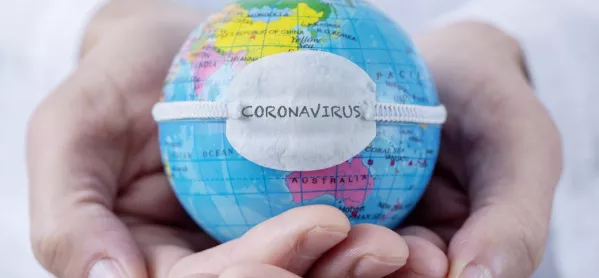- Home
- Is this the key to future lockdown learning?
Is this the key to future lockdown learning?

Like most teachers, I am looking forward to returning to the classroom. However, I am also keeping an anxious eye on what happens next.
Are we about to see a year of chaos as individual schools are locked down for days or weeks at a time to deal with local outbreaks? If so, how do we prepare for such a situation so that we aren’t left rushing to put something in place at the last minute again?
Read more
The science of school closures: An overview for schools
Schools reopening: My first day back in EYFS
Coronavirus: Can children socially distance?
At the beginning of lockdown, my wife (and fellow Tes contributor) Zoe Enser and I started working on a book looking at how we apply principles of Fiorella and Mayer’s Generative Learning in the classroom.
One thing that became clear as we were working on it was that this has great potential to help us prepare pupils for the event of further disruption to schools.
What is generative learning?
The principle of generative learning is that there are activities that we can ask pupils to do in which they create new learning for themselves. All these activities involve pupils taking new information from a source - such as teacher explanation, a written text, video clip etc - and then going through the process of:
- Selecting relevant information;
- Organising it;
- Integrating it into their prior knowledge.
The advantage in terms of preparing for lockdown is that these activities are straightforward and that pupils can be taught how to do them in advance so that they will be able to apply them if they are out of school.
Many of the activities will be ones that teachers and pupils may be using anyway, but the principles of generative learning help us to ensure that they are done effectively to support meaningful learning.
How to get mind mapping right
One such activity is mapping, often called mind-mapping.
In my experience, pupils are often quite poor at creating mind maps when left to their own devices. They transfer information from one place to another with a minimum of thought, but with a maximum of highlighters, bubble writing and coloured pens.
What I will need to do early on in September is teach pupils how to use mapping effectively, using the select, organise, integrate principles of generative learning so that they can use this technique in the event of a lockdown.
This would involve showing them examples of well-produced maps and breaking down their strengths - such as the careful choice over what to include, the way the map is organised into different categories and subcategories, and how the map links the subject to prior knowledge.
They will then need the opportunity to practice using this strategy in class so that I know they can apply it themselves in the future.
Opening the toolbox
My plan is to ensure that my classes have a range of generative learning strategies like this at their finger-tips that I can then direct them towards in the future. As well as mapping this will include the effective use of summarising, imagining, self-testing and self-explanation.
This should mean that remote lessons can involve me presenting pupils with new information but then they will know exactly what to do with it. The quality of their work should be much improved and so should the durability of what they learn.
There are a few important caveats to the use of generative learning.
What to watch out for
Firstly, the instruction still really matters. Pupils can’t generate learning out of nothing. Whether we provide this instruction live, through pre-recorded videos or from other sources such as articles or textbooks, these still need to be high quality. Generative learning does not replace effective instruction, it follows it.
Secondly, not all generative learning activities apply equally to all subjects and to all phases. Some, like enacting, seem more appropriate to very young pupils who struggle to move from concrete ideas to more abstract ones (such as the relationships between numbers or the events in a story) and so might benefit from manipulating objects.
However, older children might just find this a needless distraction from an abstract idea that they have no problem with grasping.
Thirdly, it is too easy to just dismiss these activities as things we, or our pupils, already do. That was certainly my first reaction. What I found I needed to do was look again and think how I could make those things we did better.
Last year revealed a real gulf between those pupils who knew how to study effectively outside of school and those who didn’t. It also showed that there is no way of capturing the magic of the classroom remotely. What we need is a different way of working if these situations arise again and this needs planning for. I think generative learning can be part of those plans.
Mark Enser is head of geography and research lead at Heathfield Community College. His new book Generative Learning in Action is out soon. He tweets @EnserMark
Keep reading for just £1 per month
You've reached your limit of free articles this month. Subscribe for £1 per month for three months and get:
- Unlimited access to all Tes magazine content
- Exclusive subscriber-only stories
- Award-winning email newsletters



